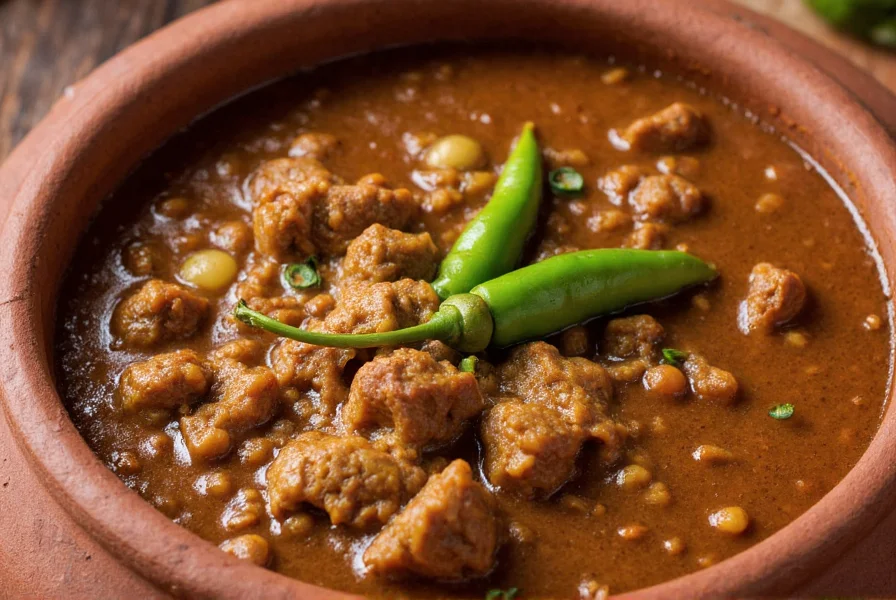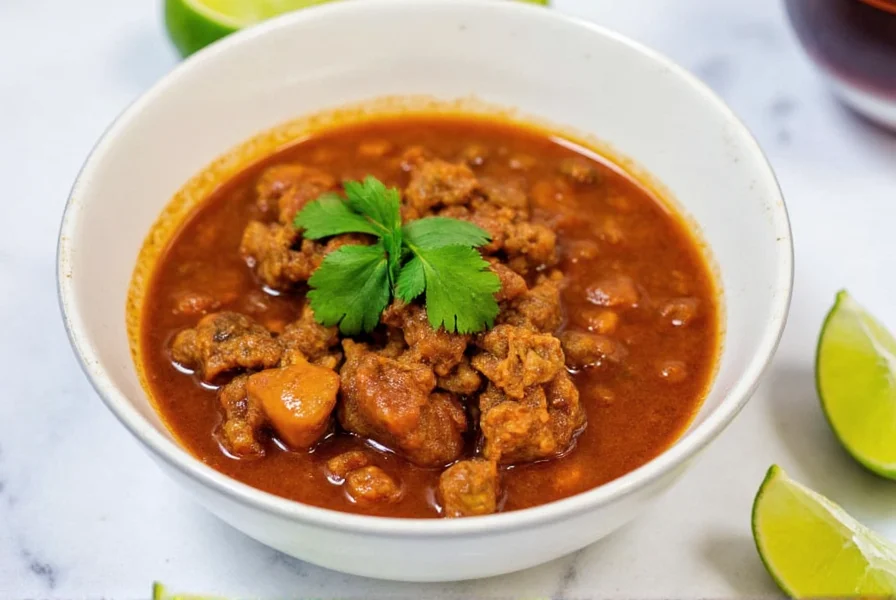What Makes Pork Chili Verde Special
Pork chili verde stands apart from its red chili counterparts through its distinctive green sauce base. Unlike standard chili recipes that use dried red chiles, this dish gets its vibrant color and tangy flavor from fresh tomatillos. The name "verde" (Spanish for green) directly references this signature characteristic. Authentic versions feature pork shoulder as the preferred cut due to its ideal fat content that renders down during slow cooking, creating succulent meat that pulls apart easily.

Essential Ingredients for Authentic Flavor
The magic of traditional pork chili verde happens through specific ingredient combinations. While regional variations exist across Mexico, certain components remain non-negotiable for authentic preparation:
| Core Ingredient | Why It Matters | Authentic Substitutes |
|---|---|---|
| Fresh tomatillos | Provide tart base and green color | Canned tomatillos (in a pinch) |
| Pork shoulder (4-5 lbs) | Marbling ensures tenderness after slow cooking | Pork butt roast |
| Fresh serrano or jalapeño peppers | Control heat level while maintaining freshness | 1-2 canned green chiles + pinch cayenne |
| White onion and garlic | Build aromatic foundation | Shallots (for milder flavor) |
Step-by-Step Preparation Guide
Creating exceptional pork chili verde requires attention to specific techniques that maximize flavor development:
Sauce Preparation
Remove husks from 2 pounds of tomatillos and rinse thoroughly. Combine with 2-3 fresh serrano peppers (stems removed), 1 white onion quartered, and 4 garlic cloves on a baking sheet. Broil 5-7 minutes until charred in spots, flipping once. Transfer roasted ingredients to blender with ½ cup broth and puree until smooth. This roasting step significantly enhances depth compared to raw tomatillo sauce.
Meat Searing and Simmering
Cut 4-5 pounds pork shoulder into 2-inch cubes, pat dry, and season generously with salt. Heat 2 tablespoons oil in heavy pot over medium-high heat. Sear meat in batches until well-browned on all sides. Remove pork and sauté 1 diced white onion until translucent. Return pork to pot, add pureed sauce, and enough broth to barely cover meat. Bring to gentle simmer, then reduce heat to low.
Slow Cooking for Perfect Texture
Cover pot and maintain gentle simmer for 2-3 hours until pork shreds easily with fork. Skim excess fat periodically. For deeper flavor, refrigerate overnight and reheat before serving—this allows flavors to meld completely. The extended cooking time transforms tough connective tissues into gelatin, creating that signature fall-apart texture impossible with quicker methods.

Avoiding Common Preparation Mistakes
Many home cooks encounter issues with their pork chili verde due to preventable errors:
- Using lean pork cuts - Tenderloin or loin produce dry, stringy results. Shoulder's fat content is essential
- Skipping the roasting step - Raw tomatillos create a one-dimensional flavor profile
- Over-reducing the sauce - Authentic consistency should coat spoon but remain soupy
- Adding acid too early - Lime juice or vinegar added during cooking can prevent proper thickening
Serving Traditions and Modern Variations
Traditional Mexican preparation serves pork chili verde with:
- Warm corn tortillas for dipping and wrapping
- White rice to balance the rich sauce
- Freshly chopped cilantro and diced white onion
- Lime wedges for brightening each serving
Modern adaptations include slow cooker pork chili verde (transfer seared meat and sauce to crockpot, cook on low 6-8 hours) and instant pot versions (high pressure 45 minutes plus natural release). For weeknight efficiency, many cooks prepare the sauce ahead and refrigerate for up to 3 days before adding pork.
Storage and Reheating Best Practices
Pork chili verde improves with time as flavors continue developing. Store cooled stew in airtight container:
- Refrigerator: Up to 4 days
- Freezer: Up to 3 months (portion in freezer bags flat for quick thawing)
Reheat gently on stove over medium-low heat, adding small amounts of broth if needed. Avoid microwave reheating which can make meat tough. The collagen in pork shoulder continues breaking down during storage, often making day-two chili verde noticeably more tender.
Frequently Asked Questions
What's the difference between pork chili verde and green chili chicken?
Pork chili verde specifically uses pork shoulder as the protein base with a sauce built around roasted tomatillos. Green chili chicken substitutes chicken thighs but maintains the same tomatillo-based sauce. The cooking time differs significantly—pork requires 2-3 hours of simmering to tenderize the tougher cut, while chicken needs only 45-60 minutes.
Can I make pork chili verde without tomatillos?
Traditional pork chili verde requires tomatillos for its distinctive tart flavor and green color. While you can substitute canned tomatillos in winter months, replacing them entirely with green tomatoes creates a noticeably different dish. The unique citrusy note of tomatillos cannot be replicated with other ingredients while maintaining authenticity.
Why does my pork chili verde taste bitter?
Bitterness typically comes from over-roasting the tomatillos or using peppers with seeds and membranes intact. When broiling, remove tomatillos once 50% blackened—excessive charring creates bitterness. Always remove pepper seeds and white membranes before roasting, as these contain most heat compounds that can turn bitter during cooking. Adding ½ teaspoon sugar during simmering can counteract mild bitterness.
What side dishes pair best with pork chili verde?
Traditional accompaniments include warm corn tortillas, Mexican red rice, and refried beans. For modern presentations, try it over creamy polenta, with avocado slices, or alongside roasted sweet potatoes. The acidity of the sauce balances rich sides, while the pork's richness complements lighter vegetable preparations like grilled zucchini or elote (Mexican street corn).
How can I adjust the heat level in pork chili verde?
Control heat by adjusting pepper types and preparation. For mild chili verde, use only 1 jalapeño with seeds removed. For medium heat, include 2 serranos with half the seeds. For authentic heat, keep all pepper seeds and add 1 habanero. Remember that heat intensifies slightly during cooking but mellow significantly after refrigeration. Always taste before serving and adjust with lime juice to balance excessive heat.











 浙公网安备
33010002000092号
浙公网安备
33010002000092号 浙B2-20120091-4
浙B2-20120091-4